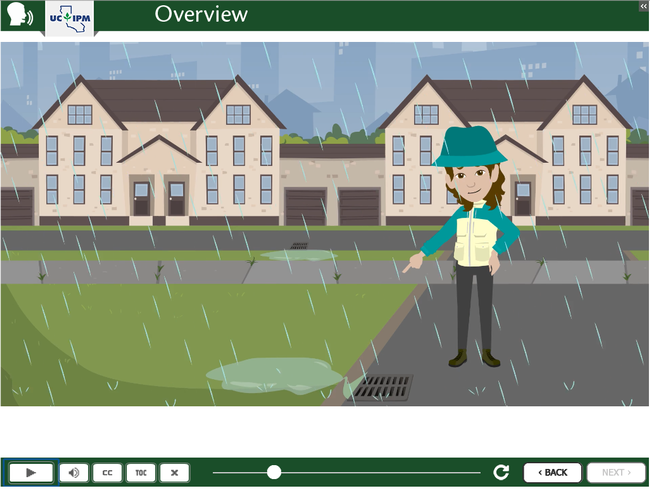
Posts Tagged: Statewide Integrated Pest Management Program
Spiked Forelegs of a Praying Mantis: There Is No Escape
A praying mantis, an incredible ambush predator, can lie in wait for hours for its prey. Often it's so camouflaged that it totally blends in with its habitat. It can rotate its head 180 degrees--and nothing, it seems, can escape its view. Praying mantises are not considered biological pest...
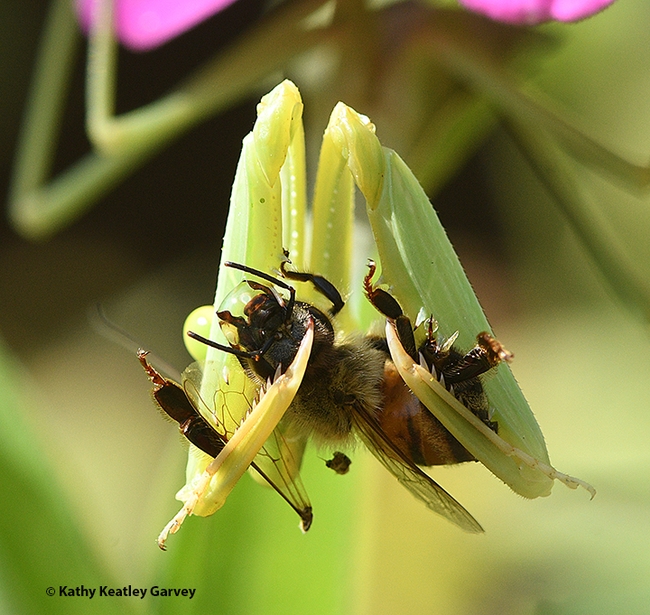
This praying mantis, Stagmomantis limbata, has just ambushed a honey bee and is grasping it in its spiked forelegs. There is no Harry Houdini-kind of escape. (Photo by Kathy Keatley Garvey)
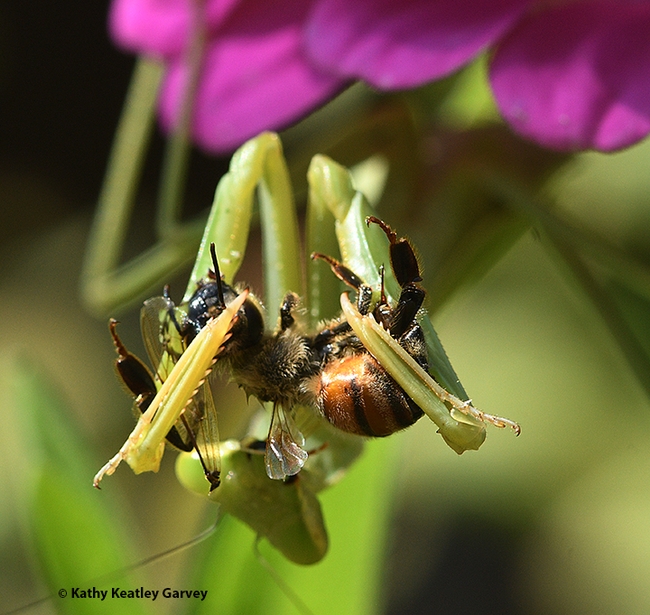
Death grip. With its two spiked forelegs, the praying mantis firmly grasps the honey bee. Photo by Kathy Keatley Garvey)
Those Goofy-Looking Cartoon Characters Called Crane Flies
Back in April of 2021, we wrote: "They're out there, and you don't have to crane your neck to see them." The topic: crane flies. They're often mistakenly called "mosquito eaters" or "mosquito hawks." They're neither. They're members of the family Tipulidae of the order Diptera (flies). Lynn...
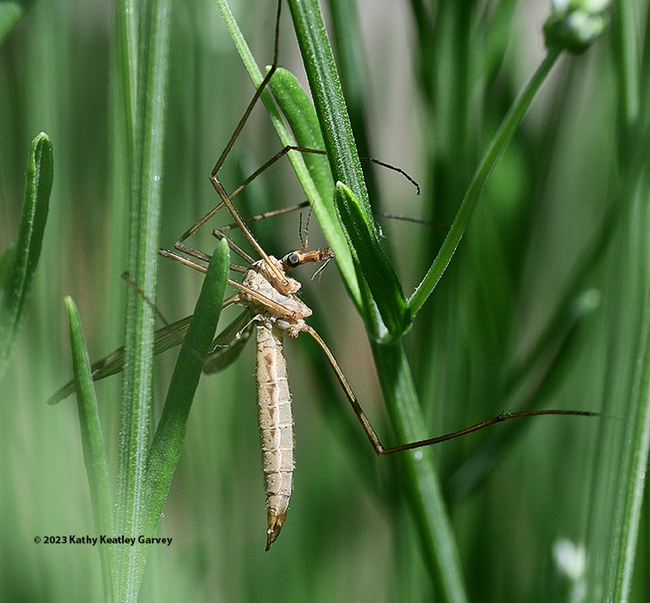
A crane fly resting in a Spanish lavender bed in Vacaville, Calif. Crane flies are sometimes called "mosquito eaters," but they do not eat mosquitoes. (Photo by Kathy Keatley Garvey)
Of Lady Beetles and Green Fruit Beetle Larvae
Make way for the beetles! Lady beetles, green fruit beetle larvae, and stick-on bug tattoos drew inquisitive and appreciative crowds when the UC Statewide Integrated Pest Management Program (UC IPM) staffed an informational booth at Briggs Hall during the 109th annual UC Davis Picnic...
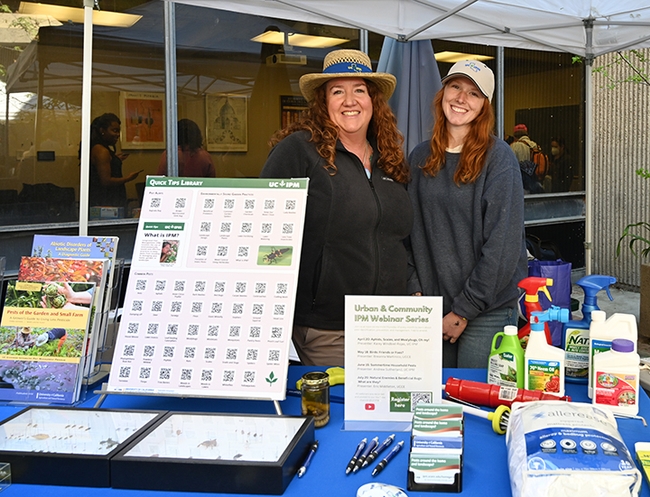
Ready to field questions are these representatives of the UC Statewide Integrated Pest Management Program: Karey Windbiel-Rojas (left), associate director for Urban and Community IPM/Area IPM Advisor, and IPM educator Lauren Fordyce. (Photo by Kathy Keatley Garvey)
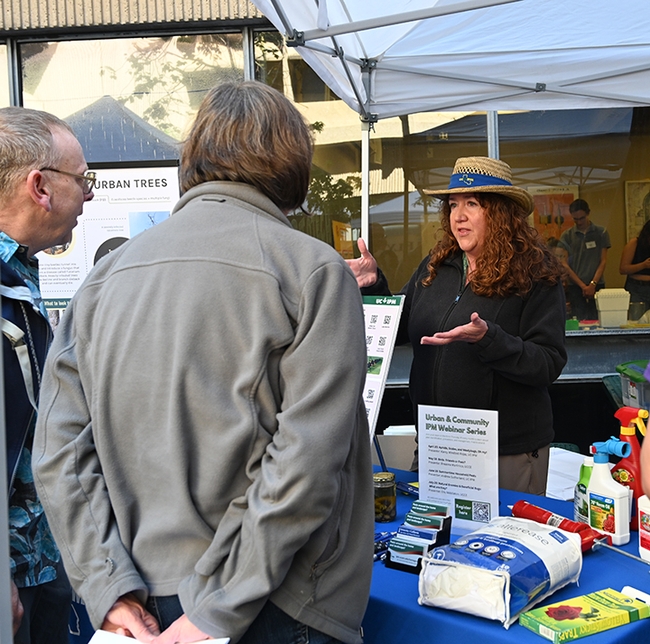
Karey Windbiel-Rojas, associate director for Urban and Community IPM/Area IPM Advisor, answers a question. (Photo by Kathy Keatley Garvey)
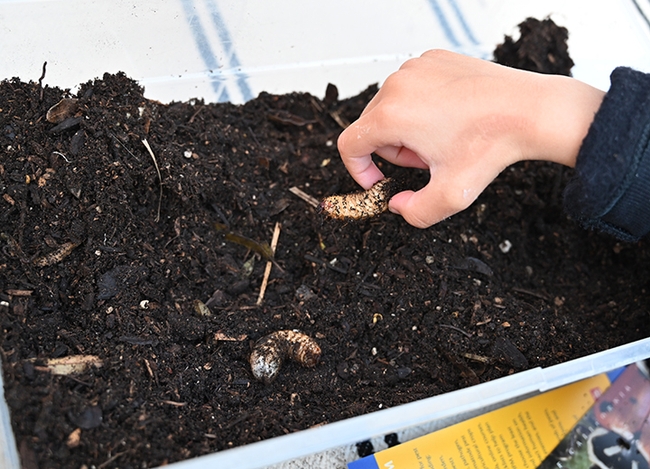
Youngsters and adults alike enjoyed watching and holding the green fruit beetle larvae. (Photo by Kathy Keatley Garvey)
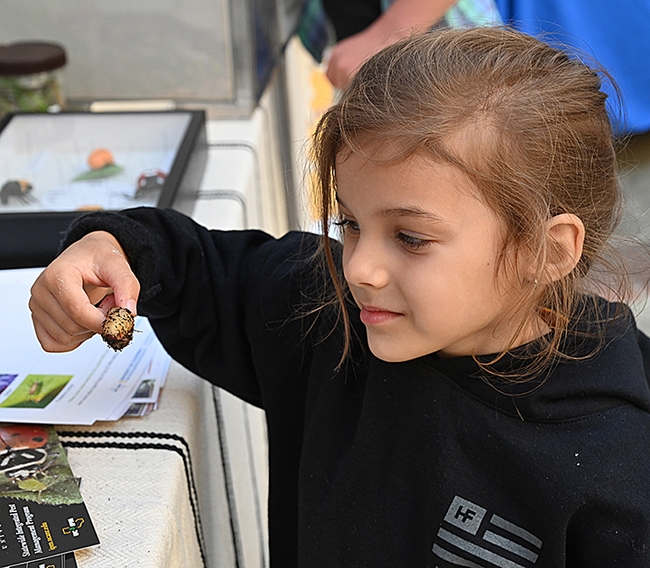
Teagan Pelusi, 4, of Pleasant Hill, is fascinated by a green fruit beetle larva. "We love learning about bugs," said her father Christopher Van Steyn, as the larva captivated her interest. (Photo by Kathy Keatley Garvey)
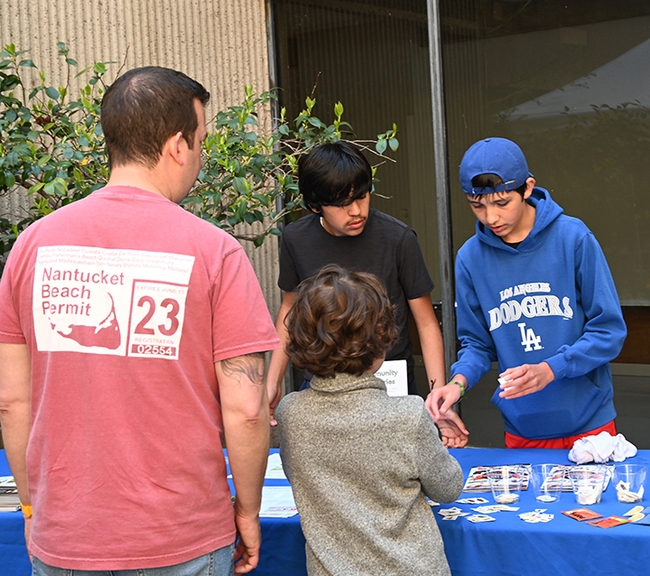
Diego Rojas (left) and his brother, Spencer Rojas, offered information about invasive pests as they gave away stick-on (temporary) tattoos. Their mother, Karey Windbiel-Rojas, a UC IPM administrator, was at an adjacent table. (Photo by Kathy Keatley Garvey)
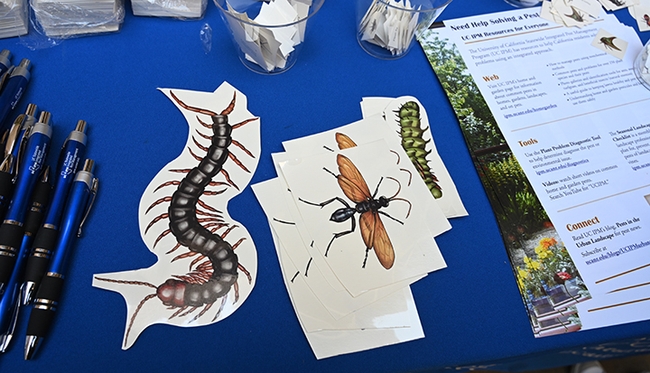
Guess the stick-on tattoos? From left are a Chinese red-headed centipede (Scolopendra subspinipes mutilans); a tarantula hawk (Pepsis heros); and a hickory horned devil caterpillar of a regal moth (Citheronia regalis). (Photo by Kathy Keatley Garvey)
Lady Beetle Lovers, Unite!
Luck be a lady! Little kids love selecting lady beetles, aka ladybugs, at the UC Statewide Integrated Pest Management (UC IPM) booth at Briggs Hall during the annual campuswide UC Davis Picnic Day. The excitement, the capture, the I-get-to-take-these-home-and-put-them-in-my-garden...
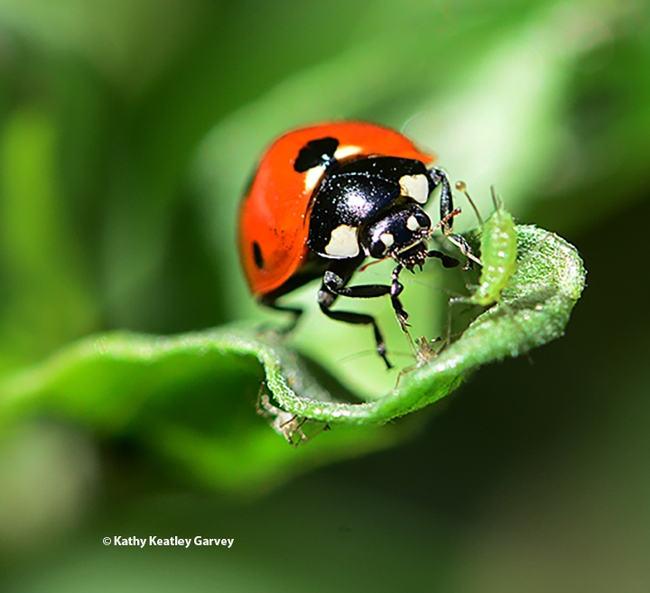
A lady beetle, aka ladybug, gets ready to devour an aphid. (Photo by Kathy Keatley Garvey)
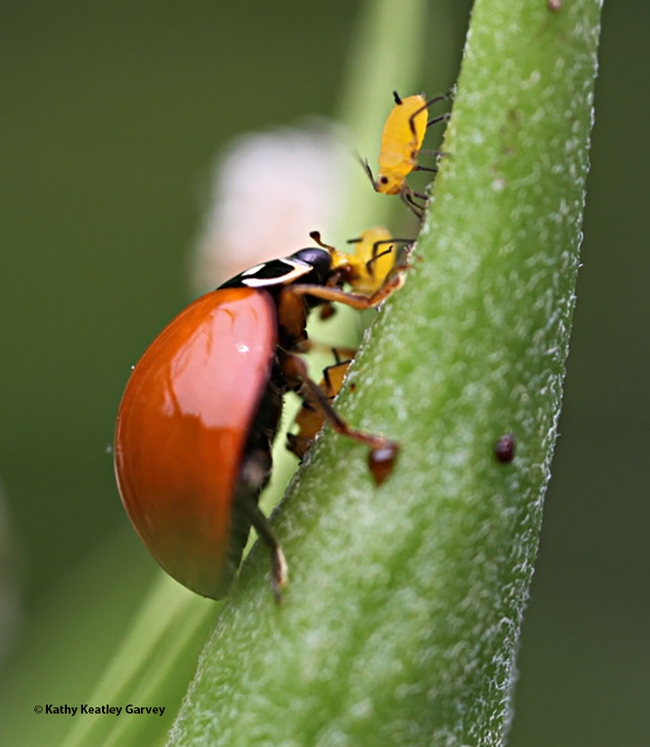
Get in line! A lady beetle devouring oleander aphids. (Photo by Kathy Keatley Garvey)
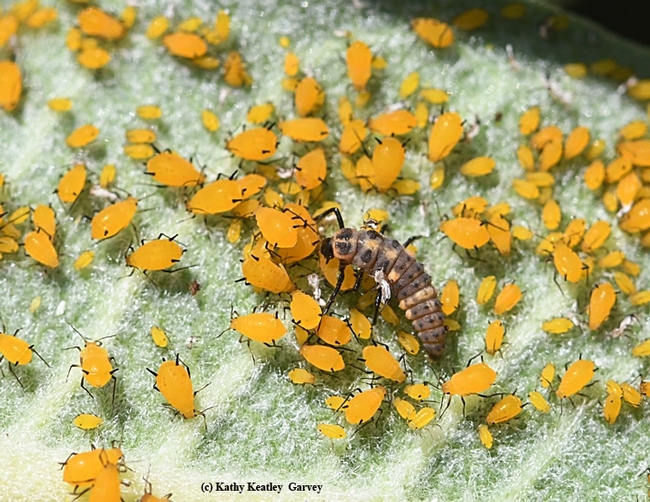
The larvae of lady beetle devour aphids, too. (Photo by Kathy Keatley Garvey)
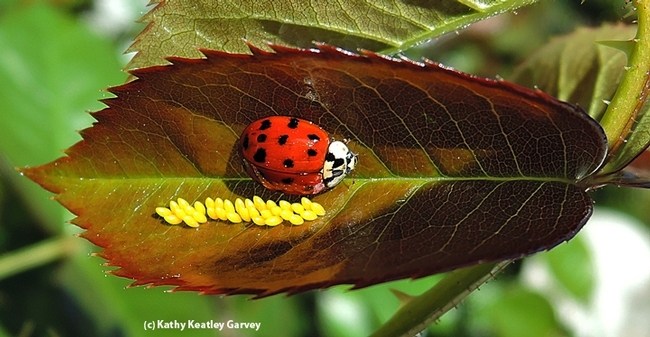
A lady beetle and her eggs. (Photo by Kathy Keatley Garvey)
New online pesticide-use course aims to protect water quality
Do you know that some pesticides used around homes and other structures are toxic to small aquatic organisms living in nearby streams, creeks, rivers and oceans? The UC Statewide Integrated Pest Management Program has launched a new online course on runoff and surface water protection in California. This course is designed for pest management professionals working primarily in structural pest control or landscape maintenance, but residents and property managers may also find the presented information useful.
Developed by pest management experts from the California Department of Pesticide Regulation (DPR) and the University of California, this course presents information on the Surface Water Protection Regulations that are found in Title 3 of the California Code of Regulations. These regulations were put into place to prevent pesticide runoff into California waterways and to reduce surface water contamination from pyrethroid insecticide use.
In this course, you will learn about the types of pesticide applications that are allowed under the regulations, as well as application types that are prohibited and also application types that are exempt. The course takes a close look at pyrethroids, particularly bifenthrin because of its high use in urban areas, high detection in surface waters, and high toxicity to aquatic organisms. Fipronil, another commonly used ingredient in structural and landscape products, is addressed in the course as well because it causes similar water-quality concerns as pyrethroids. Bifenthrin is used for managing pests such as ants, crickets and lawn grubs. Fipronil is used for ants, roaches and termites.
The Urban Pyrethroid and Fipronil Use: Runoff and Surface Water Protection course has been approved by DPR for a total of 1.5 continuing education units, including 0.5 hour of Pesticide Laws and Regulations and 1.0 hour of Other and by the Structural Pest Control Board for 1.5 hours of Rules and Regulations.
The course takes about 90 minutes to complete. It is divided up into seven sections so a person can stop and resume where they left off. The course is free. To take the course, people need to set up an account at https://campus.extension.org/ then they can enroll. The direct link to the course is https://campus.extension.org/course/view.php?id=2221.
UC IPM currently offers 22 online courses with continuing education units from DPR. Many of these courses are also credited by the California Structural Pest Control Board, Certified Crop Adviser, the Western Chapter of the International Society of Arboriculture, and the Arizona Department of Agriculture.

